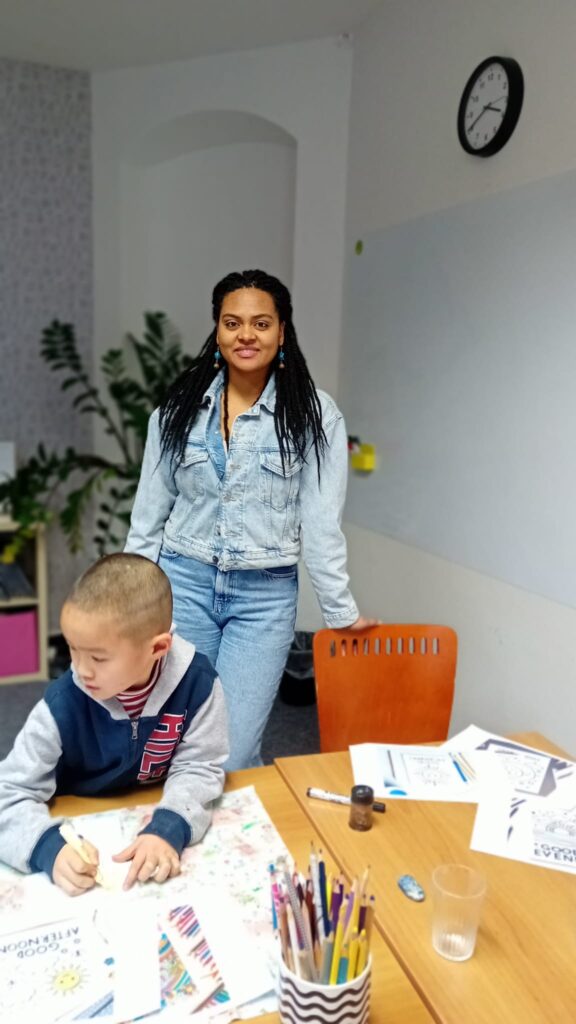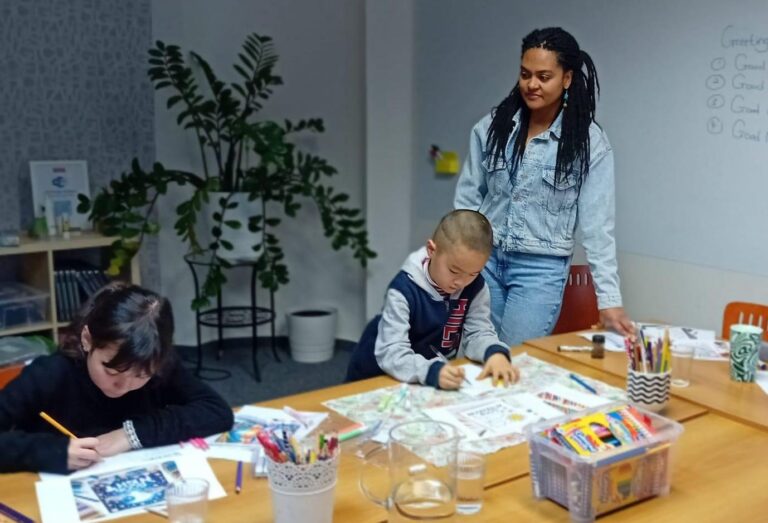What made you want to become a teacher?
I’ve always been drawn to teaching, ever since my college days when I was involved in summer educational programs. Seeing the lightbulb moments in kids’ eyes and knowing I had a part in that was incredibly rewarding. It’s about shaping future leaders, really. My background in the Arts also pushed me towards teaching – there’s something magical about blending creativity with learning.
Do you think kids are more open to learning new language and other skills than adults?
Absolutely! Kids are like little sponges, eager to soak up new sounds and ideas, especially when it comes to languages. Their natural curiosity and the fun they find in learning through play are what make them so open. Adults can certainly learn too, but they often need to see the practical application, like conversational language skills, to stay motivated.
You are currently running an English through Arts and Crafts course at The Bridge, could you tell us something more about this course?
Sure! The English through Arts and Crafts (EAAC) course is designed for young learners, where we mix English learning with creative activities. We dive into themes like nature and the solar system, using art and crafts as a medium. It’s about making English learning a part of their natural, everyday discovery process. Think making solar system models while picking up new English vocabulary – it’s fun and educational!

Do you see differences between creative and traditional way of learning?
Definitely. Traditional methods often rely heavily on memorization, which can be a bit dry. The creative approach, on the other hand, is all about bringing learning to life. It’s hands-on, engaging, and much more dynamic. This approach really helps in developing not just language skills but also creativity and critical thinking.
What are the pros and cons of the creative teaching method?
The biggest pro is engagement. Kids love it, and they learn without even realizing they’re learning. It also helps with memory retention and skill development. The con, I’d say, is that it requires more planning and smaller class sizes for individual attention. And, well, it can get a bit messy with all the creative projects!
Is this method suitable for everyone?
I believe so! While it’s particularly great for visual learners and those who love arts and crafts, I’ve seen it work wonders across the board. I always try to tailor my approach to each child’s needs, ensuring everyone gets the most out of it. It’s more than just teaching English; it’s about nurturing overall development and personal growth.

